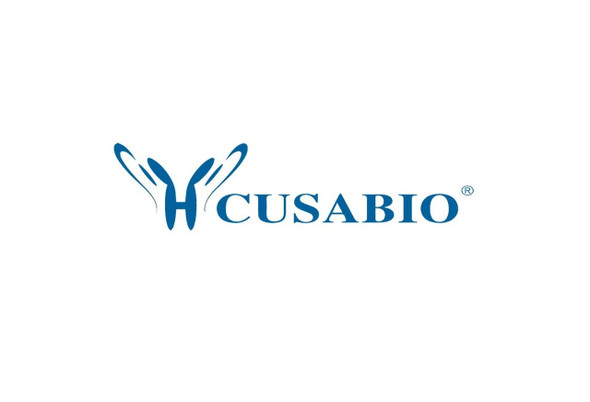Cusabio Human Recombinants
Recombinant Human Phosphoenolpyruvate carboxykinase, cytosolic [GTP] (PCK1) | CSB-EP017613HU
- SKU:
- CSB-EP017613HU
- Availability:
- 3 - 7 Working Days
Description
Recombinant Human Phosphoenolpyruvate carboxykinase, cytosolic [GTP] (PCK1) | CSB-EP017613HU | Cusabio
Alternative Name(s): cytosolic [GTP]; GTP; PCK1; PCKGC_HUMAN; PEP carboxykinase; PEPCK-C; PEPCK1; PEPCKC; Phosphoenolpyruvate carboxykinase 1 (soluble); Phosphoenolpyruvate carboxykinase 1; Phosphoenolpyruvate carboxykinase; Phosphoenolpyruvate carboxykinase, cytosolic [GTP]; Phosphoenolpyruvate carboxykinase, cytosolic; Phosphoenolpyruvate carboxylase; Phosphopyruvate carboxylase
Gene Names: PCK1
Research Areas: Metabolism
Organism: Homo sapiens (Human)
AA Sequence: MPPQLQNGLNLSAKVVQGSLDSLPQAVREFLENNAELCQPDHIHICDGSEEENGRLLGQMEEEGILRRLKKYDNCWLALTDPRDVARIESKTVIVTQEQRDTVPIPKTGLSQLGRWMSEEDFEKAFNARFPGCMKGRTMYVIPFSMGPLGSPLSKIGIELTDSPYVVASMRIMTRMGTPVLEAVGDGEFVKCLHSVGCPLPLQKPLVNNWPCNPELTLIAHLPDRREIISFGSGYGGNSLLGKKCFALRMASRLAKEEGWLAEHMLILGITNPEGEKKYLAAAFPSACGKTNLAMMNPSLPGWKVECVGDDIAWMKFDAQGHLRAINPENGFFGVAPGTSVKTNPNAIKTIQKNTIFTNVAETSDGGVYWEGIDEPLASGVTITSWKNKEWSSEDGEPCAHPNSRFCTPASQCPIIDAAWESPEGVPIEGIIFGGRRPAGVPLVYEALSWQHGVFVGAAMRSEATAAAEHKGKIIMHDPFAMRPFFGYNFGKYLAHWLSMAQHPAAKLPKIFHVNWFRKDKEGKFLWPGFGENSRVLEWMFNRIDGKASTKLTPIGYIPKEDALNLKGLGHINMMELFSISKEFWEKEVEDIEKYLEDQVNADLPCEIEREILALKQRISQM
Source: E.coli
Tag Info: N-terminal 6xHis-tagged
Expression Region: 1-622aa
Sequence Info: Full Length
MW: 73.2 kDa
Purity: Greater than 90% as determined by SDS-PAGE.
Relevance: Catalyzes the conversion of oxaloacetate (OAA) to phosphoenolpyruvate (PEP), the rate-limiting step in the metabolic pathway that produces glucose from lactate and other precursors derived from the citric acid cycle.
Reference: The DNA sequence and comparative analysis of human chromosome 20.Deloukas P., Matthews L.H., Ashurst J.L., Burton J., Gilbert J.G.R., Jones M., Stavrides G., Almeida J.P., Babbage A.K., Bagguley C.L., Bailey J., Barlow K.F., Bates K.N., Beard L.M., Beare D.M., Beasley O.P., Bird C.P., Blakey S.E. , Bridgeman A.M., Brown A.J., Buck D., Burrill W.D., Butler A.P., Carder C., Carter N.P., Chapman J.C., Clamp M., Clark G., Clark L.N., Clark S.Y., Clee C.M., Clegg S., Cobley V.E., Collier R.E., Connor R.E., Corby N.R., Coulson A., Coville G.J., Deadman R., Dhami P.D., Dunn M., Ellington A.G., Frankland J.A., Fraser A., French L., Garner P., Grafham D.V., Griffiths C., Griffiths M.N.D., Gwilliam R., Hall R.E., Hammond S., Harley J.L., Heath P.D., Ho S., Holden J.L., Howden P.J., Huckle E., Hunt A.R., Hunt S.E., Jekosch K., Johnson C.M., Johnson D., Kay M.P., Kimberley A.M., King A., Knights A., Laird G.K., Lawlor S., Lehvaeslaiho M.H., Leversha M.A., Lloyd C., Lloyd D.M., Lovell J.D., Marsh V.L., Martin S.L., McConnachie L.J., McLay K., McMurray A.A., Milne S.A., Mistry D., Moore M.J.F., Mullikin J.C., Nickerson T., Oliver K., Parker A., Patel R., Pearce T.A.V., Peck A.I., Phillimore B.J.C.T., Prathalingam S.R., Plumb R.W., Ramsay H., Rice C.M., Ross M.T., Scott C.E., Sehra H.K., Shownkeen R., Sims S., Skuce C.D., Smith M.L., Soderlund C., Steward C.A., Sulston J.E., Swann R.M., Sycamore N., Taylor R., Tee L., Thomas D.W., Thorpe A., Tracey A., Tromans A.C., Vaudin M., Wall M., Wallis J.M., Whitehead S.L., Whittaker P., Willey D.L., Williams L., Williams S.A., Wilming L., Wray P.W., Hubbard T., Durbin R.M., Bentley D.R., Beck S., Rogers J.Nature 414:865-871(2001)
Storage: The shelf life is related to many factors, storage state, buffer ingredients, storage temperature and the stability of the protein itself. Generally, the shelf life of liquid form is 6 months at -20?/-80?. The shelf life of lyophilized form is 12 months at -20?/-80?.
Notes: Repeated freezing and thawing is not recommended. Store working aliquots at 4? for up to one week.
Function: Catalyzes the conversion of oxaloacetate (OAA) to phosphoenolpyruvate (PEP), the rate-limiting step in the metabolic pathway that produces glucose from lactate and other precursors derived from the citric acid cycle.
Involvement in disease: Phosphoenolpyruvate carboxykinase deficiency, cytosolic (PCKDC)
Subcellular Location: Cytoplasm
Protein Families: Phosphoenolpyruvate carboxykinase [GTP] family
Tissue Specificity: Major sites of expression are liver, kidney and adipocytes.
Paythway: PI3K-Aktsignalingpathway
Form: Liquid or Lyophilized powder
Buffer: If the delivery form is liquid, the default storage buffer is Tris/PBS-based buffer, 5%-50% glycerol. If the delivery form is lyophilized powder, the buffer before lyophilization is Tris/PBS-based buffer, 6% Trehalose, pH 8.0.
Reconstitution: We recommend that this vial be briefly centrifuged prior to opening to bring the contents to the bottom. Please reconstitute protein in deionized sterile water to a concentration of 0.1-1.0 mg/mL.We recommend to add 5-50% of glycerol (final concentration) and aliquot for long-term storage at -20?/-80?. Our default final concentration of glycerol is 50%. Customers could use it as reference.
Uniprot ID: P35558
HGNC Database Link: HGNC
UniGene Database Link: UniGene
KEGG Database Link: KEGG
STRING Database Link: STRING
OMIM Database Link: OMIM

![Recombinant Human Phosphoenolpyruvate carboxykinase, cytosolic [GTP] (PCK1) Recombinant Human Phosphoenolpyruvate carboxykinase, cytosolic [GTP] (PCK1)](https://cdn11.bigcommerce.com/s-rvypo0hmzw/images/stencil/608x608/products/2659/4984/cusabio__81676.1638370075__79743.1638524413.jpg?c=1)

![Recombinant Human Phosphoenolpyruvate carboxykinase, cytosolic [GTP] (PCK1) Recombinant Human Phosphoenolpyruvate carboxykinase, cytosolic [GTP] (PCK1)](https://cdn11.bigcommerce.com/s-rvypo0hmzw/images/stencil/100x100/products/2659/4984/cusabio__81676.1638370075__79743.1638524413.jpg?c=1)





